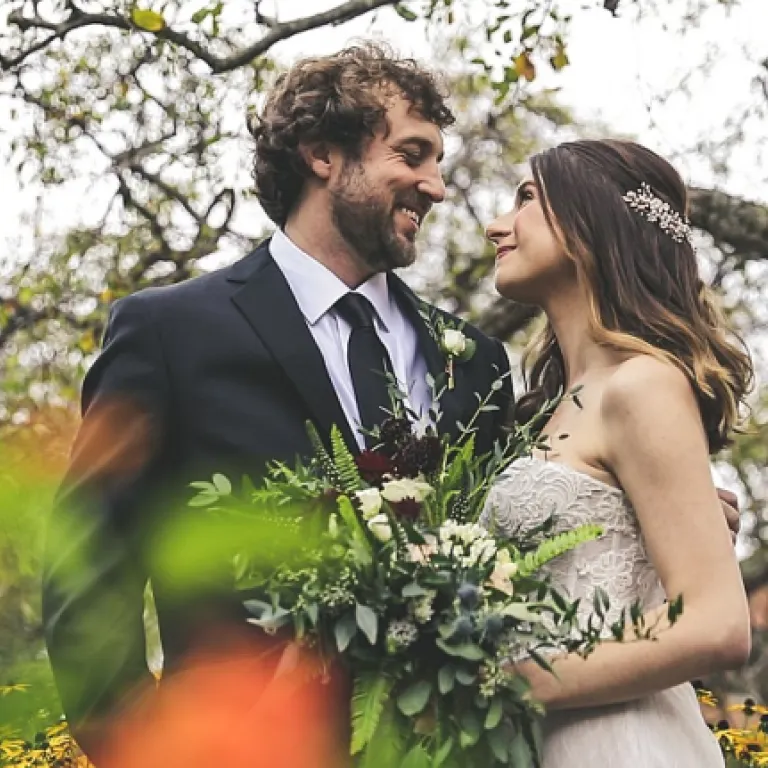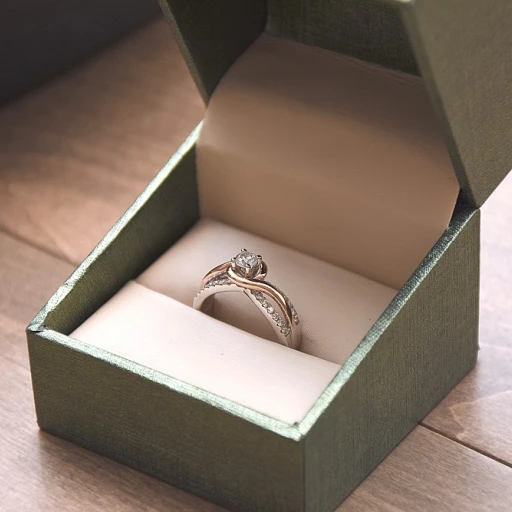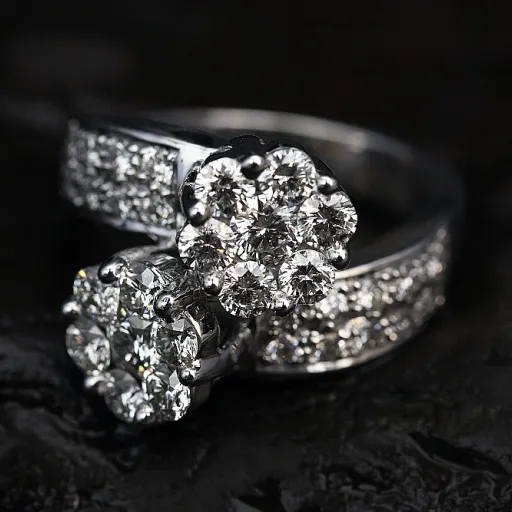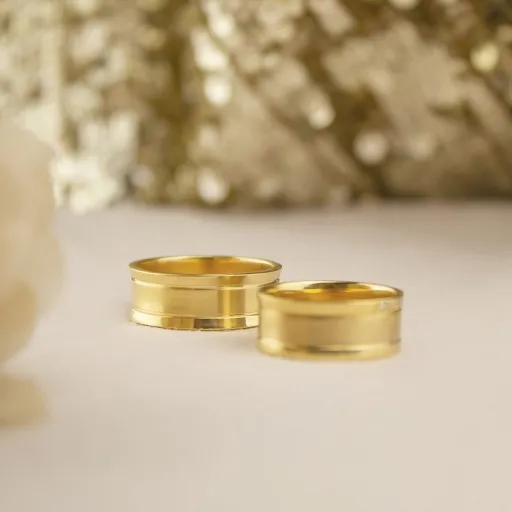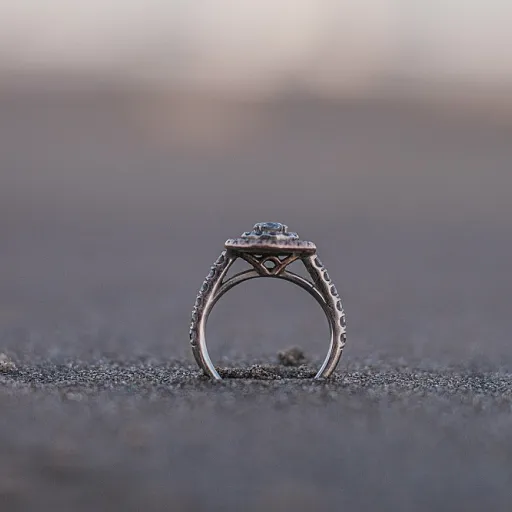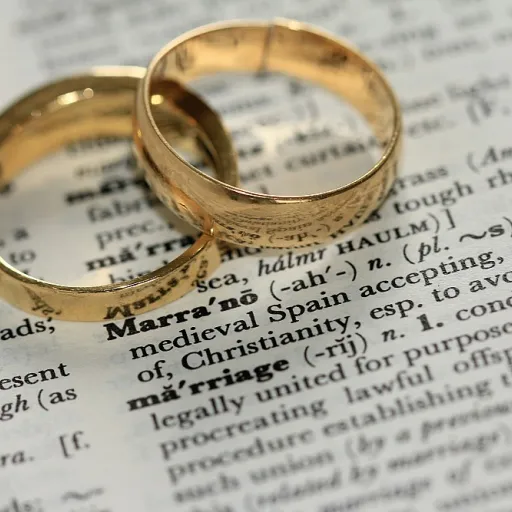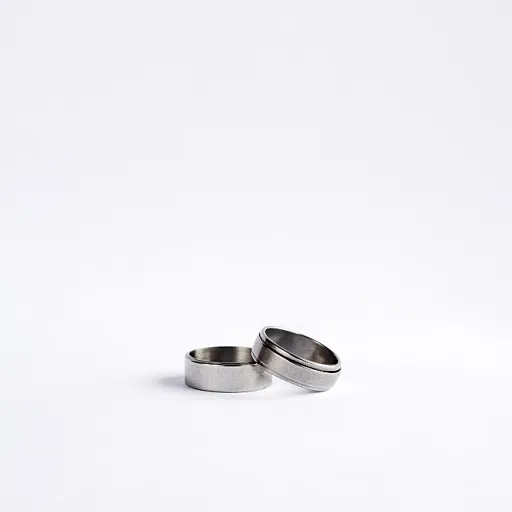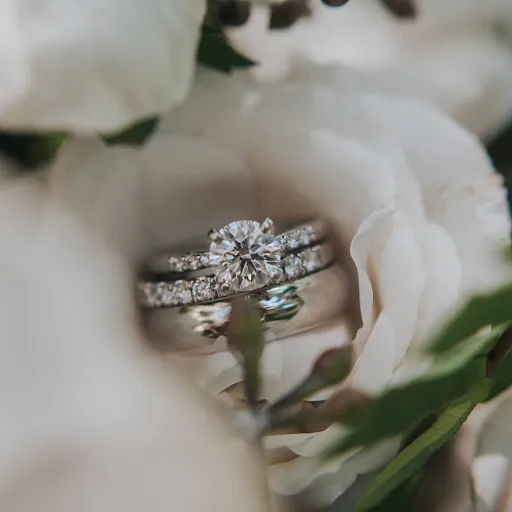
Understanding the appeal of non diamond wedding rings
Why Couples Are Choosing Non-Diamond Wedding Rings
Today’s couples are redefining what a wedding ring means. While diamond rings have long been the traditional choice, more people are exploring unique alternatives that better reflect their personalities, values, and love stories. The desire for something different is growing, and it’s not just about standing out. Many are looking for rings that offer ethical sourcing, distinctive colors, and a more personal touch.
Personal Expression and Meaning
Choosing a non-diamond wedding ring allows couples to express their individuality. Whether it’s a gold wedding band with a blue sapphire center or a wedding ring set with green sapphire or pink sapphire, these alternatives offer a wide range of colors and styles. Gemstones like sapphires, rubies, and emeralds each carry their own symbolism, letting you select a ring that truly represents your relationship and values. For some, a gemstone’s meaning is just as important as its appearance.
Value and Budget Considerations
Price is another important factor. Non-diamond wedding rings often come with a more accessible price tag compared to traditional diamond rings. This allows couples to invest in a unique engagement ring or wedding band without compromising on quality or style. Many alternative gemstones, such as sapphires or rubies, offer beauty and durability at a more regular price, making them attractive for those who want something special without the high price of diamonds.
Ethical and Environmental Choices
Ethical concerns are also influencing choices. Some couples prefer gemstones that have a transparent supply chain or are lab-created, reducing the environmental impact associated with traditional diamond mining. This shift is making alternatives like sapphire, rubies, and other colored gemstones more popular for both wedding bands and engagement rings.
- Greater variety of colors and styles, from blue sapphire to green sapphire
- Options for both classic and modern designs
- Potential for a more meaningful center stone
- Opportunities to customize your wedding ring for a truly personal touch
For those interested in exploring vibrant gemstone options, discover more about the allure of ruby-embellished wedding rings and how they can add a unique touch to your celebration of love.
Popular materials for non diamond wedding rings
Exploring Distinctive Materials for Modern Wedding Bands
Choosing a wedding ring that stands out from the regular diamond band is becoming increasingly popular among couples seeking something unique. The material you select for your wedding band can reflect your personality, values, and love story. Here are some of the most sought-after alternatives to traditional diamond rings:
- Gold: Classic yellow, white, and rose gold remain timeless choices for wedding rings. Gold wedding bands are loved for their durability and warmth, and they pair beautifully with a variety of gemstones, including sapphires and rubies.
- Platinum: Known for its strength and naturally white sheen, platinum is a premium option. It’s hypoallergenic and holds up well to daily wear, making it a practical yet luxurious alternative to regular diamond rings.
- Palladium: This metal offers a similar look to platinum but at a more accessible price. It’s lightweight, durable, and resists tarnish, making it ideal for those who want a modern twist on a classic wedding band.
- Titanium and Tungsten: For couples who prioritize strength and a contemporary feel, titanium and tungsten bands are excellent choices. These metals are scratch-resistant and offer a sleek, industrial look that stands apart from traditional gold or diamond rings.
- Alternative Gemstones: Sapphires, rubies, and emeralds are gaining popularity as center stones in wedding rings. Blue sapphire, pink sapphire, and green sapphire offer vibrant color and symbolism. Sapphires rubies and other gemstones can be set in gold or platinum bands for a distinctive appearance. For more inspiration, explore the allure of ruby-embellished wedding rings and discover how these gemstones can transform your engagement ring or wedding band.
- Mixed Metals: Combining different metals, such as a white gold band with yellow gold accents, creates a modern and personalized look. This approach allows you to match your wedding ring with other jewelry or your partner’s band.
When considering the price of your wedding ring, remember that materials like titanium or palladium often offer a lower price regular than platinum or gold. Gemstone choices, such as sapphire diamond combinations or unique center stones, can also influence the sale price. By exploring these alternatives, you can find a wedding band that fits your style and budget, while still expressing your love in a meaningful way.
Gemstone options beyond diamonds
Exploring Vibrant Gemstone Choices for Your Wedding Ring
When looking for a unique alternative to a diamond wedding ring, couples often turn to colored gemstones. These stones offer a personal touch and a splash of color that stands out from the regular diamond engagement rings. The choice of gemstone can reflect your style, values, and even your love story, making your wedding band or engagement ring truly one of a kind.
- Sapphires: Sapphires are a popular choice for wedding rings, especially blue sapphire. They are known for their durability and deep, captivating color. Sapphires come in a range of shades, including pink sapphire and green sapphire, offering flexibility for your center stone or accent gems. Sapphires are often paired with gold wedding bands for a classic yet modern look.
- Rubies: Rubies are prized for their rich red hue and are considered symbols of passion and love. A ruby center stone can make your wedding ring stand out, and rubies are almost as durable as diamonds, making them suitable for everyday wear.
- Emeralds: Emeralds bring a lush green color to your wedding band. While they require a bit more care than sapphires or diamonds, their unique beauty and vintage appeal make them a favorite among couples seeking something different.
- Other Gemstones: Couples are also choosing gemstones like aquamarine, morganite, and tourmaline for their engagement rings and wedding bands. These stones offer a variety of colors and price points, making it easier to find a ring that fits your budget and style.
When selecting a gemstone, consider its hardness, color, and symbolism. For example, sapphires and rubies are excellent for daily wear due to their durability, while softer stones may require more careful handling. The perfect $1000 engagement ring can often be found by choosing a beautiful gemstone alternative to diamonds, allowing you to maximize both style and value.
| Gemstone | Main Color | Durability | Symbolism | Typical Price Range |
|---|---|---|---|---|
| Sapphire | Blue, Pink, Green | Very High | Wisdom, Loyalty | $$ - $$$$ |
| Ruby | Red | Very High | Love, Passion | $$$ - $$$$ |
| Emerald | Green | Moderate | Growth, Harmony | $$ - $$$$ |
| Morganite | Peach, Pink | Moderate | Compassion, Promise | $ - $$$ |
Choosing a gemstone wedding ring is a meaningful way to celebrate your love. Whether you opt for sapphires, rubies, or another vibrant stone, you can find a beautiful alternative to diamond rings that suits your taste and budget. Remember to consider how the gemstone will look with your chosen band and setting, and think about the care required to keep your ring looking its best for years to come.
Customizing your non diamond wedding ring
Personalizing Your Alternative Wedding Ring
Choosing a non diamond wedding ring opens up a world of creative possibilities for couples who want something truly unique. Customization allows you to reflect your personal style, love story, and values in your wedding band or engagement ring. Here are some ways to make your alternative ring stand out:- Select a Distinctive Gemstone: Instead of a traditional diamond, consider a sapphire, pink sapphire, blue sapphire, green sapphire, or even rubies. Each gemstone offers its own color, symbolism, and meaning. Sapphires, for example, are known for their durability and come in a range of hues beyond classic blue.
- Mix Metals for Contrast: Pairing metals like yellow gold, white gold, or rose gold can create a striking look. A gold wedding band with a colored gemstone center stone offers a modern twist on classic rings.
- Choose a Unique Setting: The way your gemstone is set can dramatically change the appearance of your ring. Halo settings, bezel settings, or vintage-inspired designs can highlight the beauty of sapphires, rubies, or other gemstones.
- Engraving and Personal Touches: Adding an engraving inside your wedding band or engagement ring is a timeless way to personalize your jewelry. Consider meaningful dates, initials, or a short message that represents your love.
- Combine Gemstones: For a truly one-of-a-kind piece, combine different gemstones. A sapphire diamond combination or a band featuring sapphires and rubies can be both elegant and symbolic.
Balancing Style and Budget
Customizing your wedding ring doesn’t have to mean exceeding your budget. Many alternative gemstones, such as sapphires or green sapphires, offer beauty and durability at a more accessible price compared to traditional diamond rings. When shopping, compare the regular price and sale price of different rings and consider how your choices in gemstone, metal, and setting will affect the final cost. Custom designs can sometimes be more affordable than expected, especially when opting for gemstones other than diamonds.Making Your Ring a Reflection of Your Love
Ultimately, your wedding ring should feel like a natural extension of your relationship. Whether you choose a bold blue sapphire center stone, a delicate pink sapphire, or a combination of gemstones, the customization process is about celebrating your unique bond. Work with a reputable jeweler who can guide you through the options and help you create a wedding band or engagement ring that you’ll cherish for years to come.Caring for and maintaining non diamond wedding rings
Keeping Your Alternative Wedding Ring Looking Its Best
Choosing a non diamond wedding ring, whether it’s a blue sapphire, pink sapphire, green sapphire, or another unique gemstone, means you’ll want to keep it sparkling for years to come. Unlike traditional diamond rings, alternative gemstones and metals can have different care requirements. Here’s how to maintain the beauty and longevity of your wedding band or engagement ring:
- Regular Cleaning: Gently clean your ring with mild soap and warm water. Use a soft brush to remove dirt, especially around the center stone. Avoid harsh chemicals, which can damage gemstones like sapphires, rubies, or emeralds.
- Safe Storage: Store your wedding rings separately in a soft pouch or jewelry box. This prevents scratches, especially if your band is gold or features softer gemstones.
- Professional Maintenance: Schedule annual check-ups with a jeweler. They can inspect the setting, especially if your ring has a center gemstone or intricate details, and ensure the stones are secure.
- Mind Everyday Activities: Remove your engagement ring or wedding band during heavy work, sports, or when using cleaning products. This helps avoid accidental damage to both the metal and the gemstones.
- Know Your Gemstone: Sapphires, rubies, and other colored stones have different hardness and care needs compared to diamonds. For example, sapphires are durable but can still chip if struck hard. Understanding your gemstone’s properties helps you protect it better.
Protecting Your Investment
Even if your alternative ring was a sale price or below the regular price of a diamond wedding ring, it’s still a symbol of your love and commitment. Consider insuring your wedding ring or engagement ring, especially if it features rare gemstones or custom work. Keep all receipts and appraisals for reference, particularly if you ever need to prove the price or value for insurance or sale purposes.
Tips for Long-Term Beauty
- Have your gold wedding band or gemstone ring polished by a professional every few years to maintain its shine.
- Be cautious with colored gemstones like sapphires rubies or green sapphire, as some can fade with prolonged exposure to sunlight or chemicals.
- If your ring features a combination of diamonds and colored stones, follow care instructions for the most delicate gemstone in the design.
With a little extra attention, your alternative wedding ring will remain a cherished piece, reflecting your unique style and love story for years to come.
Budgeting and shopping tips for non diamond wedding rings
Smart Strategies for Finding the Perfect Alternative Ring
When searching for a wedding ring that stands out from the regular diamond options, it’s important to balance style, quality, and price. Alternative rings—whether you’re drawn to a blue sapphire, pink sapphire, green sapphire, or other unique gemstones—can offer exceptional value and beauty. Here are some practical tips to help you shop wisely:- Set a realistic budget: Non diamond wedding rings often come with a more accessible price tag compared to traditional diamond rings. Decide on your maximum spend for the wedding band or engagement ring, factoring in the center stone, metal (like gold), and any custom features.
- Compare price regular and sale price: Many jewelers offer both regular price and sale price options. Take time to compare, as a sale can make a sapphire diamond or gemstone band even more affordable.
- Understand gemstone value: Sapphires, rubies, and other gemstones vary in price based on color, clarity, and origin. Blue sapphires and pink sapphires are popular alternatives, but green sapphires and other colored stones can also be stunning and unique. Research the qualities that affect price so you know what you’re paying for.
- Check for certifications: Just like diamonds, high-quality sapphires, rubies, and other gemstones should come with certification. This ensures you’re getting a genuine center stone and helps protect your investment.
- Shop from reputable sources: Choose jewelers with strong reputations for quality and service. Look for reviews and ask about warranties or return policies for your wedding rings or engagement rings.
- Consider custom designs: Customizing your wedding band or engagement ring can sometimes be more affordable than you think, especially with alternative gemstones. This allows you to create a ring that truly reflects your love and style.
| Material/Gemstone | Typical Price Range | Unique Features |
|---|---|---|
| Gold wedding bands | $$ - $$$$ | Classic, durable, available in yellow, white, or rose gold |
| Blue sapphire | $$$ - $$$$$ | Symbolizes loyalty, vibrant color, strong alternative to diamonds |
| Pink sapphire | $$$ - $$$$$ | Romantic hue, unique engagement ring choice |
| Green sapphire | $$ - $$$$ | Rare, earthy tones, distinctive look |
| Sapphires rubies | $$$ - $$$$$ | Rich colors, timeless appeal, alternative to diamond gemstones |

